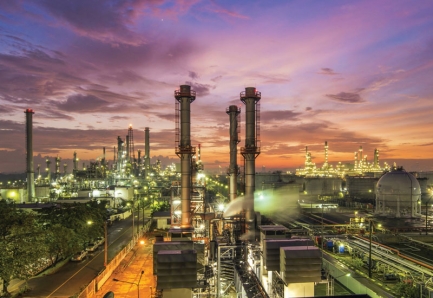|
Asia is set to receive up to 2.0 million tonnes of naphtha from the West this month, the highest amount in two years, putting pressure on light fuel margins that touched 22-month highs in November.
|

|
|---|---|
|
High refinery runs and a lack of demand for naphtha as a gasoline blendstock over the colder, wetter winter months in Europe and the United States have resulted in unused naphtha, traders said. Some 1.9 million to 2.0 million tonnes of naphtha - the key feedstock for petrochemicals such as plastics and polyester - was booked to arrive in Asia in January, traders said, the highest monthly Western volume since January 2016. Asia, being structurally short of naphtha, is an attractive sales outlet for surplus Western supplies. But the volumes due from the West are way above 2017's average monthly arrivals of 1.2 million tonnes, with spot premiums around November/December pushing to their highest since 2015. The high arrivals have dragged Asia's naphtha crack to a 2-1/2 month low of $104.95 a tonne on Thursday "1.9 million tonnes from the West seems high to me as we have not seen that level for a long time," said Premasish Das of IHS Markit. "If you look at the high gasoline inventories in Europe and the U.S. along with weaker seasonal demand, it is unlikely that naphtha exports will reduce in February/March," he added. Some trade and industry sources expect the weakness in the naphtha crack to pass as supplies could be soaked up by strong demand, especially due to a lack of cheap liquefied petroleum gas (LPG), used as an alternative feedstock. LPG, also used for heating, usually becomes more readily available in summer. But they added that naphtha crack levels in the first quarter were unlikely to return to the peak levels seen in late 2017. "Naphtha demand is set to remain strong in light of supportive steam cracking margins, and seasonal maintenance is not expected to constrain steam cracker run rates until the end of Q1," said Andrada Irimie of consulting firm JBC Energy. "Weaker LPG prices could offer some pressure to naphtha cracks, placing a ceiling on cracks which means they are unlikely to reach and sustain their early-December crack levels again over the next few months." IHS Markit's Das said he did not expect very high cracks in February/March. "If the crude price stays high, that would be the other impediment," he added, with naphtha priced off Brent. (ฺBy Reuters l Reporting by Seng Li Pen l Editing by Richard Pullin) |
|
Home >> Career Resource >> FAQ
Asian Refiners Face High Volumes of Western Naphtha
Related Career Resource
By : Reuters l Reporting by Promit Mukherjee in MUMBAI and Nidhi Verma in NEW DELHI l Editing by Henning Gloystein and Tom Hogue | November 27, 2017
By : By Reuters l Reporting by Emily Chow | December 08, 2017
By : Reuters l Reporting by Nidhi Verma l Editing by Elaine Hardcastle | December 01, 2017
By : Reuters l Reporting by Tom Westbrook l Editing by Christian Schmollinger and Gopakumar Warrier | September 12, 2017








